39 Impressionist Images of the Sea
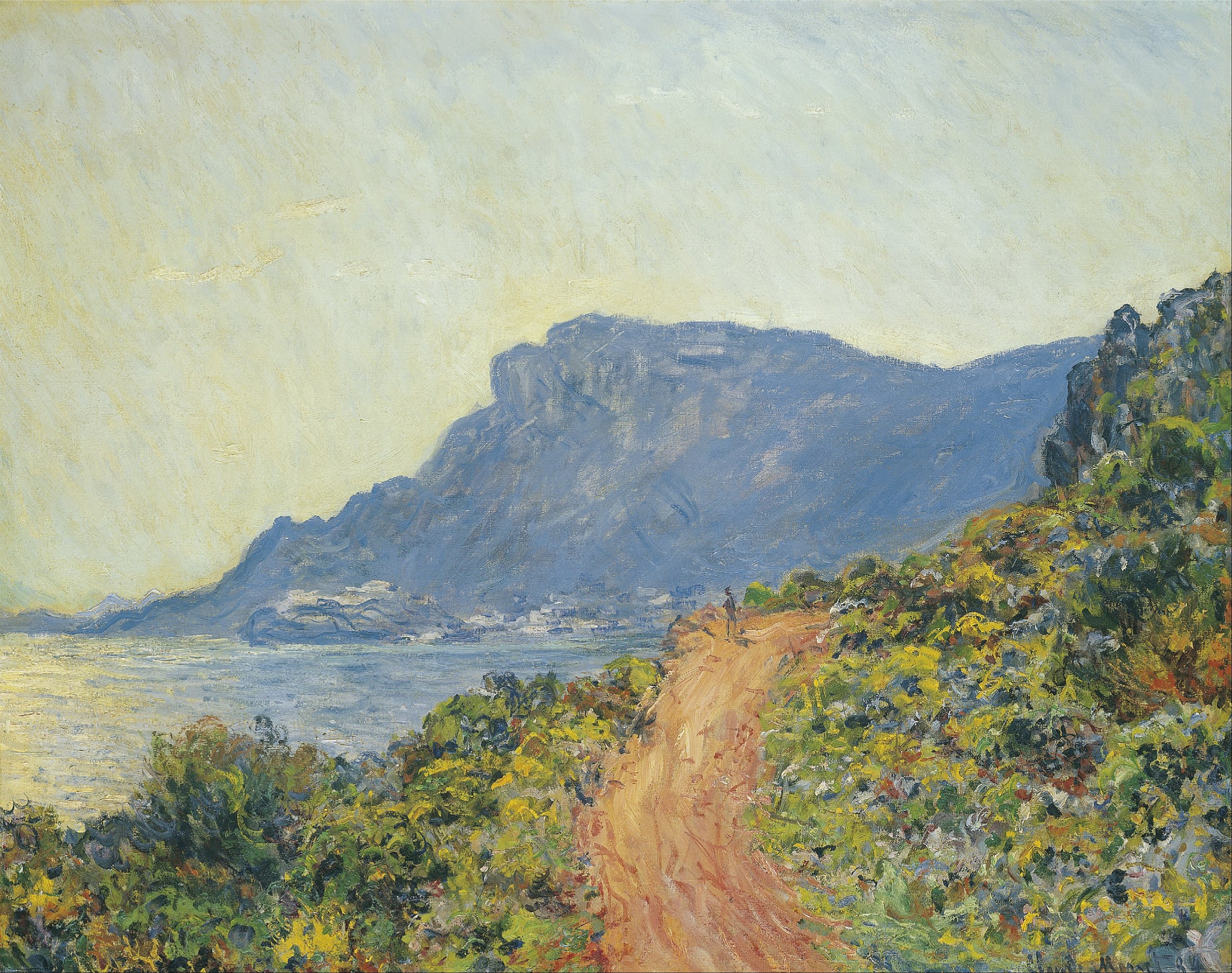
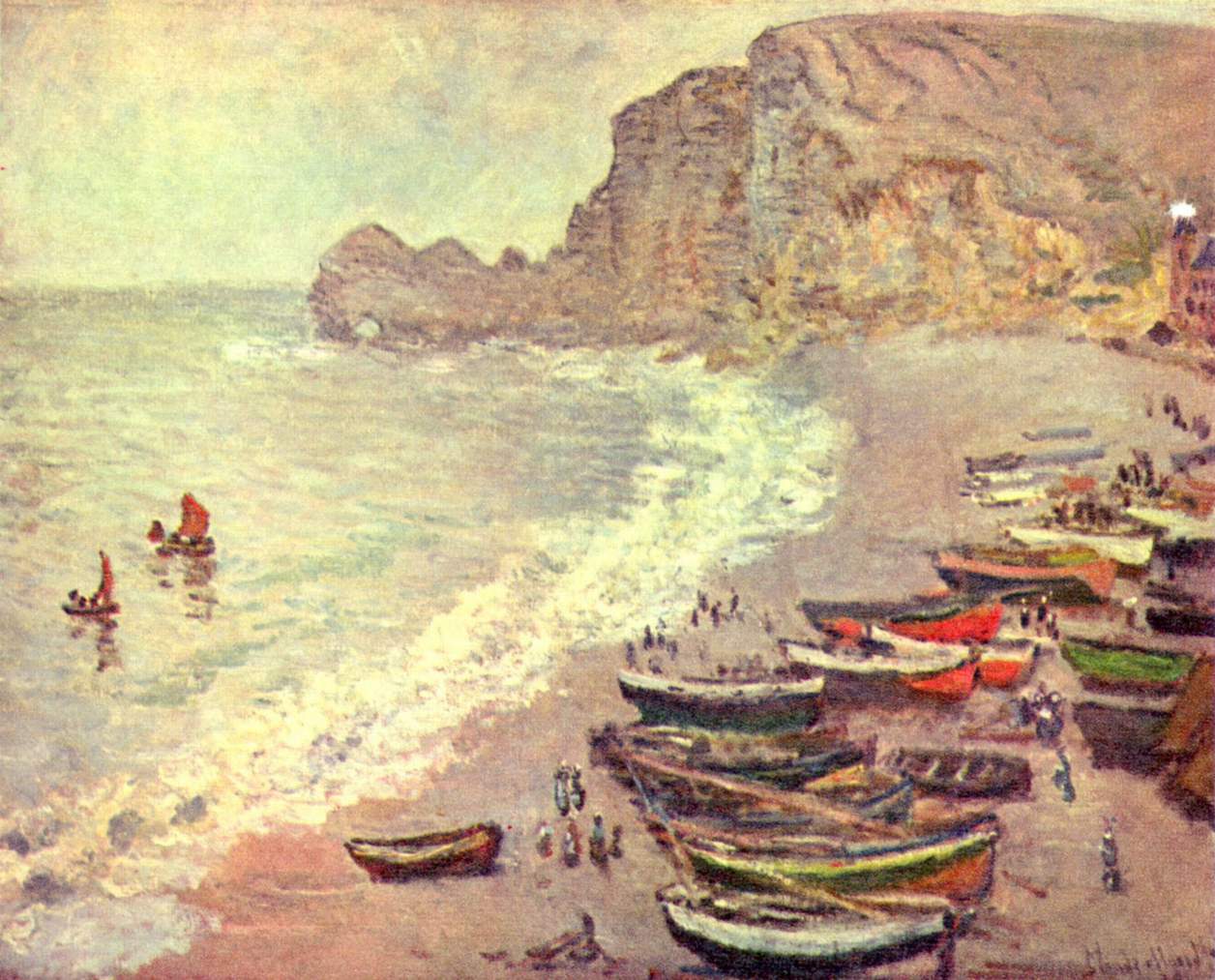
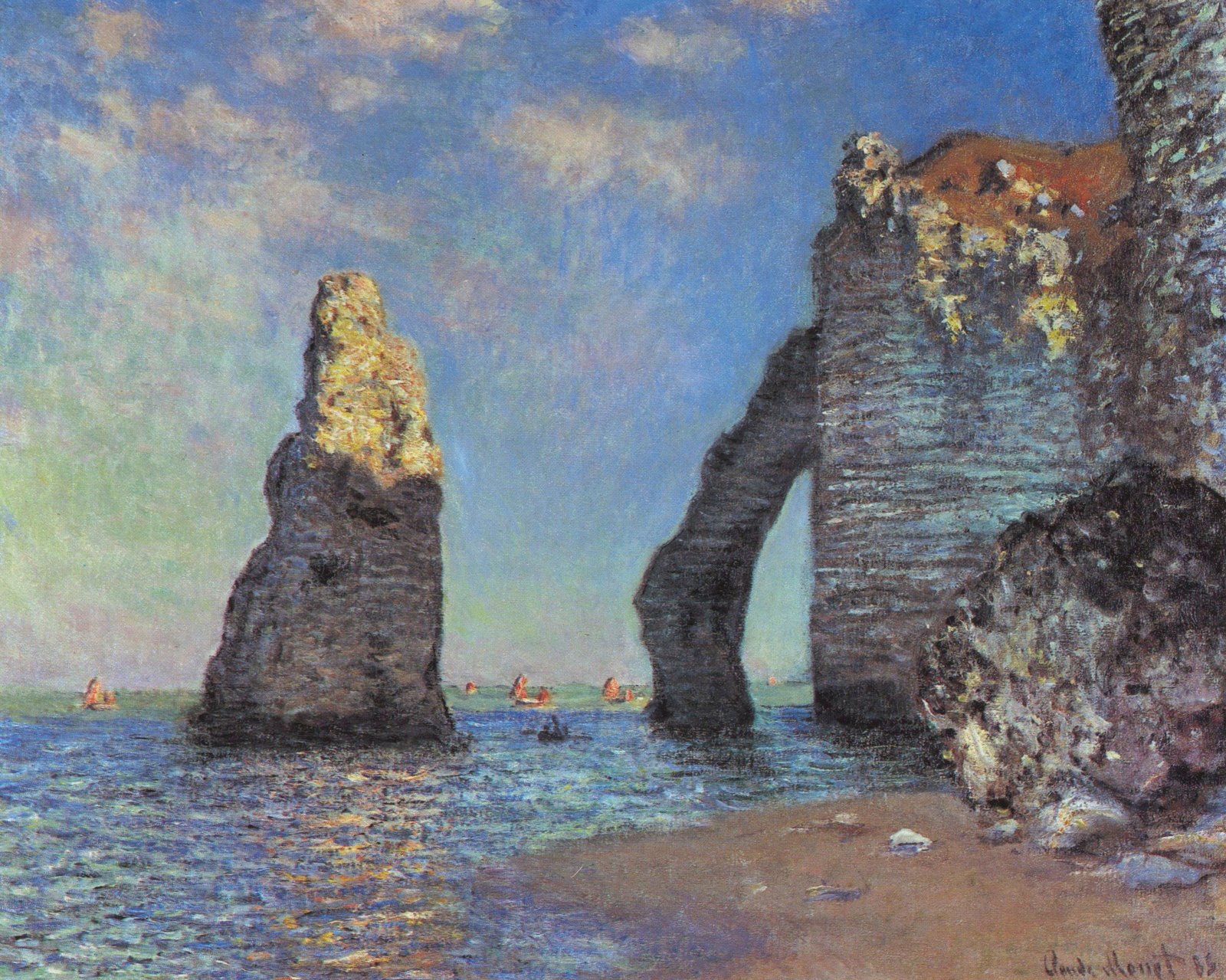
A Note About “The Cliffs at Étretat” (The Clark Art Institute)
“Between October and December 1885, Monet made nearly fifty paintings of the Normandy coast. This work shows the Porte d’Aval, a naturally formed arch, and a freestanding needle-like rock that attracted tourists and artists alike to the town of Étretat. Monet painted this view of the cliffs from an unusual location, accessible only by boat or via a precipitous path. The writer Guy de Maupassant described how the artist ‘watched the sun and the shadows, capturing in a few brushstrokes a falling ray of light or a passing cloud’.”
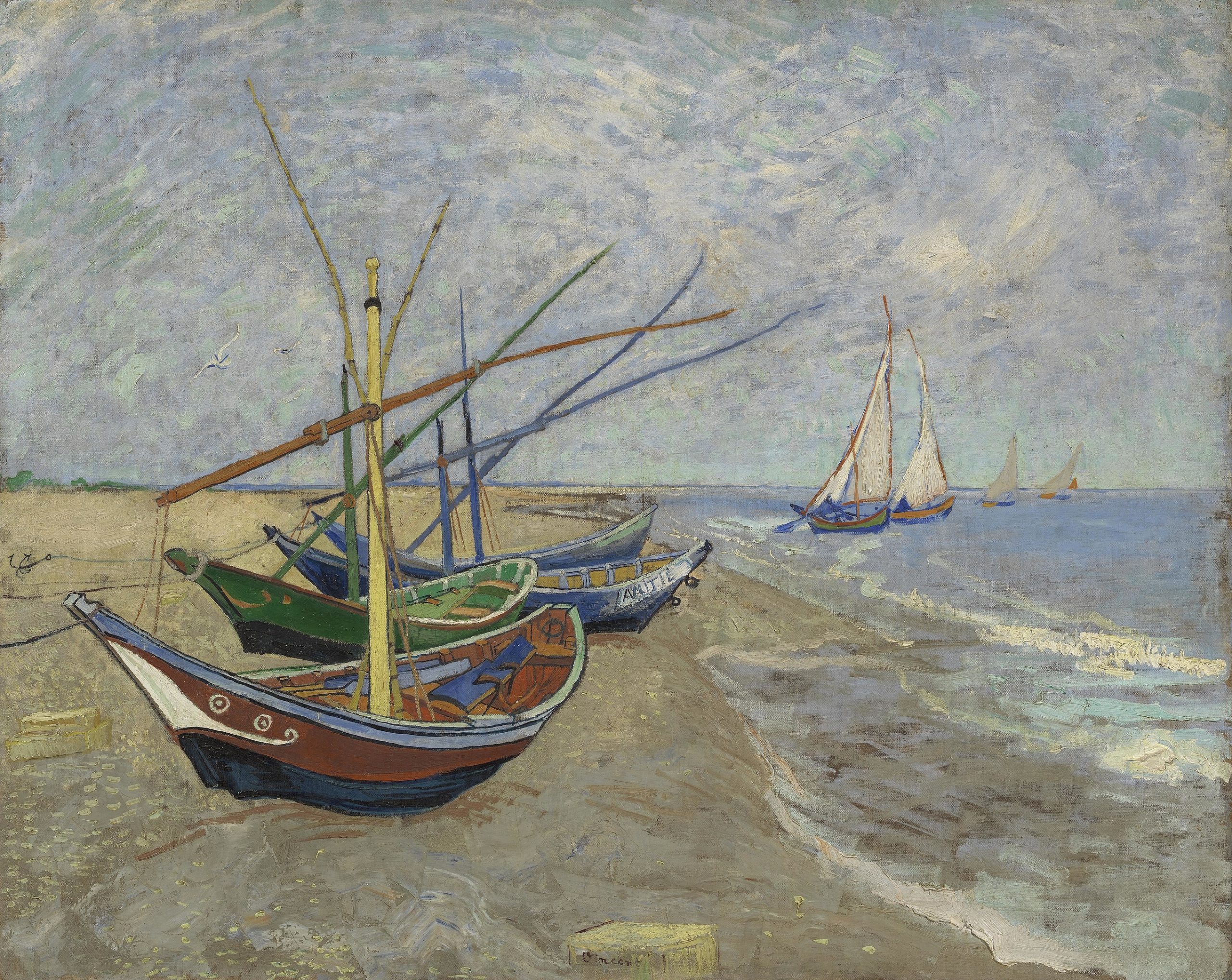
A Note About “Fishing Boats of the Beach of Les Saintes-Maries-de-la-Mer” (Van Gogh Museum)
“Any idea why these fishing boats seem a bit unreal? Compared to the uneven sandy beach, they are actually too two-dimensional. They consist of smooth areas of color, which are filled in within firm contour lines. The boats also do not cast shadows on the sand. Van Gogh thus applied elements he knew from his collection of Japanese prints.
Van Gogh would have preferred to paint these boats right there on the beach. But that didn’t work because the fishermen fished very early every day. He did draw them there, after which he made this painting at home.”
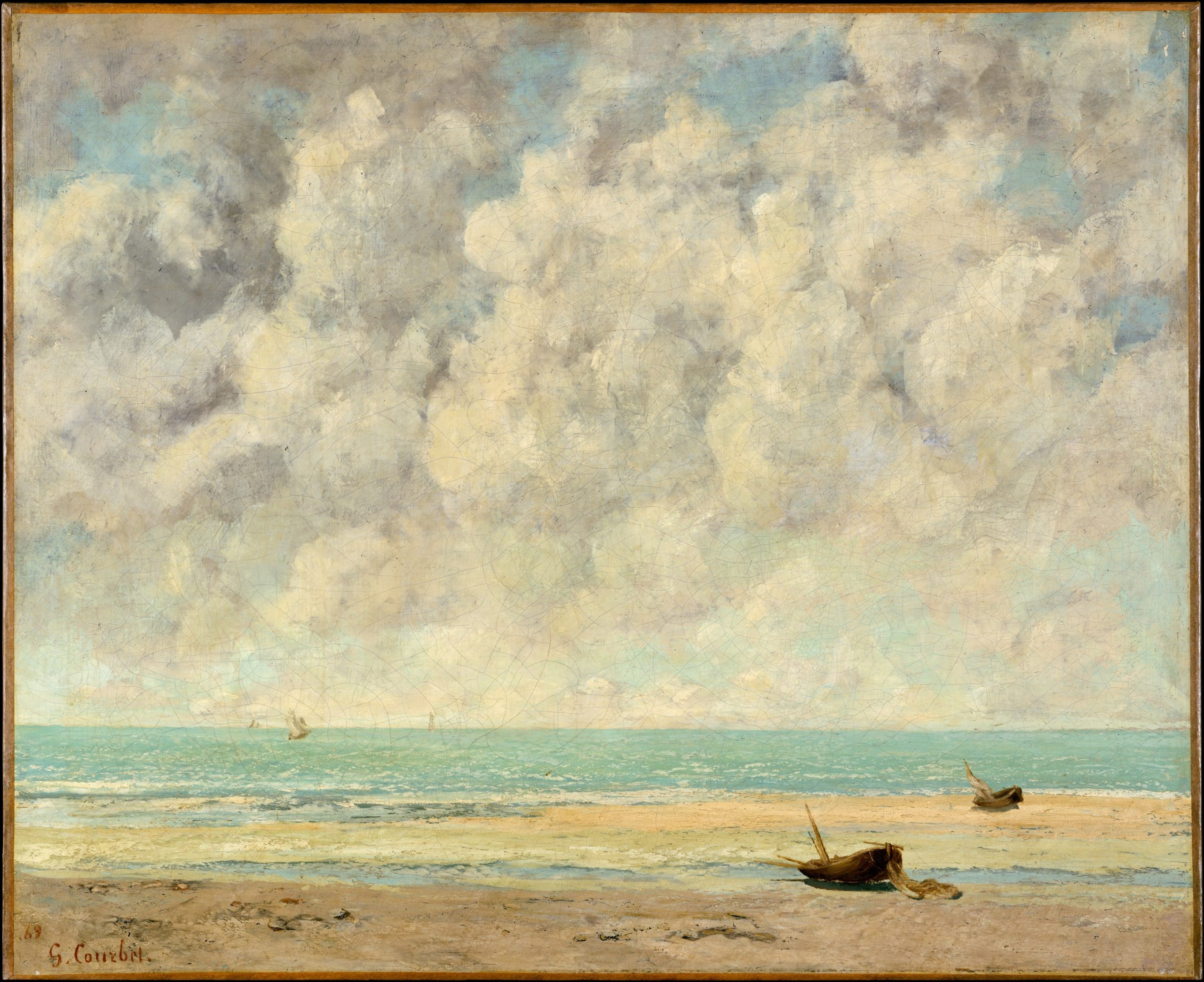
“Where Go the Boats?” by Robert Louis Stevenson
Dark brown is the river,
Golden is the sand.
It flows along for ever,
With trees on either hand.
Green leaves a-floating,
Castles of the foam,
Boats of mine a-boating—
Where will all come home?
On goes the river
And out past the mill,
Away down the valley,
Away down the hill.
Away down the river,
A hundred miles or more,
Other little children
Shall bring my boats ashore.
You can find more examples of R.S. Stevenson’s poetry and letters here.
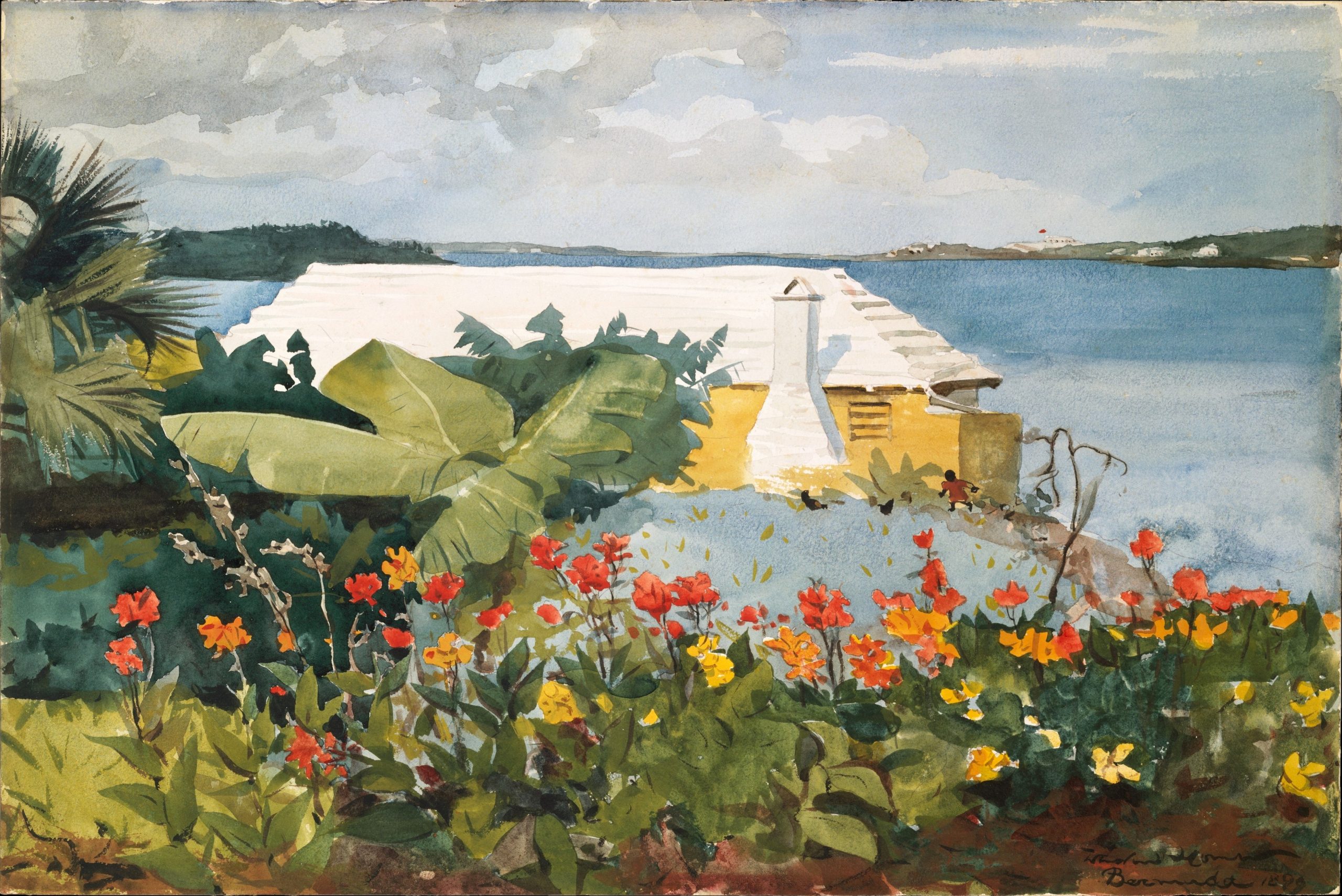
“Bermudas” by Andrew Marvell
Where the remote Bermudas ride
In th’ Oceans bosome unespy’d,
From a small Boat, that row’d along,
The listning Winds receiv’d this Song.
“What should we do but sing his Praise
That led us through the watry Maze,
Unto an Isle so long unknown,
And yet far kinder than our own?
Where he the huge Sea-Monsters wracks,
That lift the Deep upon their Backs.
He lands us on a grassy stage;
Safe from the Storms, and Prelat’s rage.
He gave us this eternal Spring,
Which here enamells every thing;
And sends the Fowl’s to us in care,
On daily Visits through the Air,
He hangs in shades the Orange bright,
Like golden Lamps in a green Night.
And does in the Pomgranates close,
Jewels more rich than Ormus show’s.
He makes the Figs our mouths to meet;
And throws the Melons at our feet.
But Apples plants of such a price,
No Tree could ever bear them twice.
With Cedars, chosen by his hand,
From Lebanon, he stores the Land.
And makes the hollow Seas, that roar,
Proclaime the Ambergris on shoar.
He cast (of which we rather boast)
The Gospels Pearl upon our coast.
And in these Rocks for us did frame
A Temple, where to sound his Name.
Oh let our Voice his Praise exalt,
Till it arrive at Heavens Vault:
Which thence (perhaps) rebounding, may
Eccho beyond the Mexique Bay.”
Thus sung they, in the English boat,
An holy and a chearful Note,
And all the way, to guide their Chime,
With falling Oars they kept the time.
You can read more poems by seventeenth century metaphysical poet Andrew Marvell here.
“Long Island Sound” by Emma Lazarus
I see it as it looked one afternoon
In August,—by a fresh soft breeze o’erblown.
The swiftness of the tide, the light thereon,
A far-off sail, white as a crescent moon.
The shining waters with pale currents strewn,
The quiet fishing-smacks, the Eastern cove,
The semi-circle of its dark, green grove.
The luminous grasses, and the merry sun
In the grave sky; the sparkle far and wide,
Laughter of unseen children, cheerful chirp
Of crickets, and low lisp of rippling tide,
Light summer clouds fantastical as sleep
Changing unnoted while I gazed thereon.
All these fair sounds and sights I made my own.
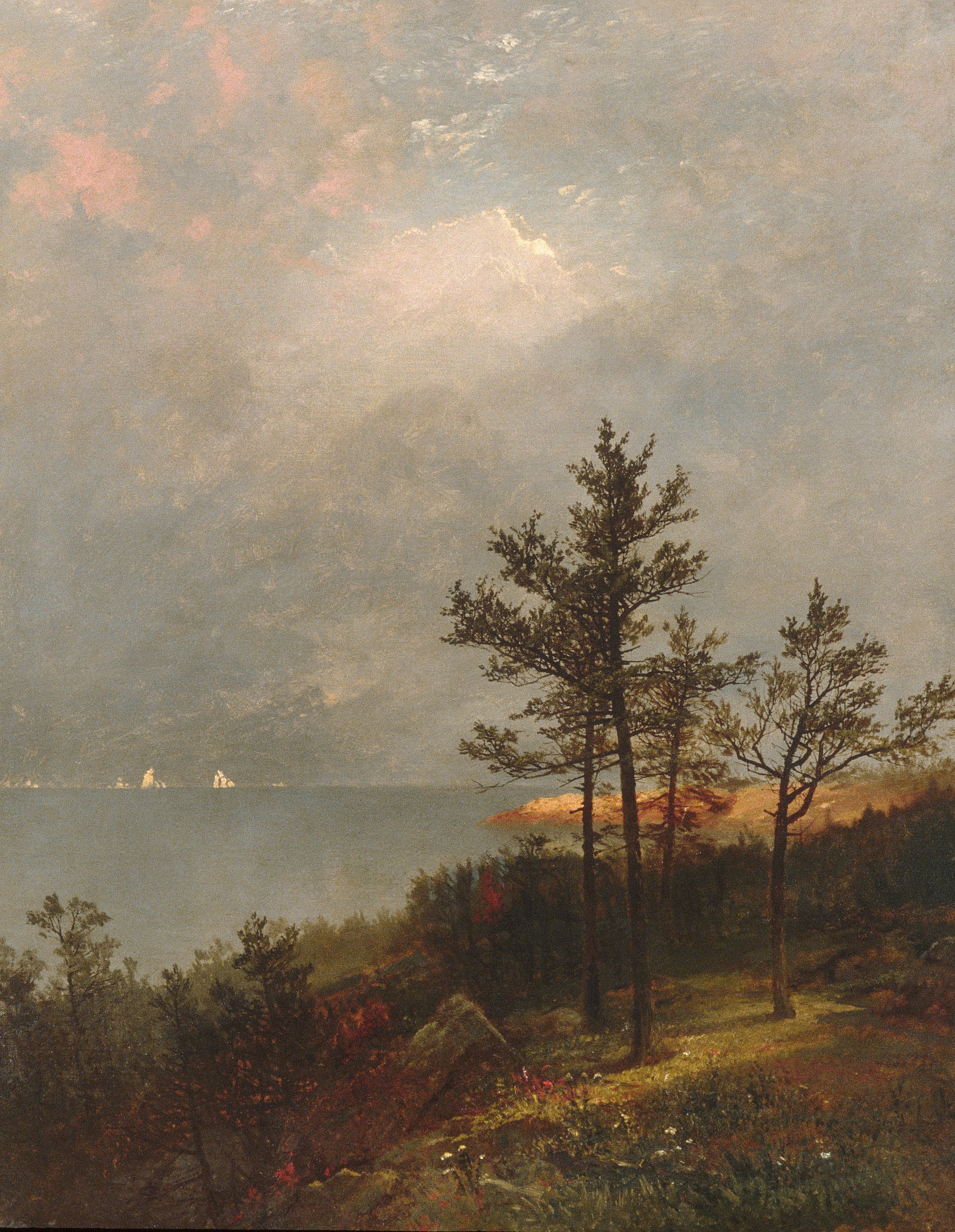
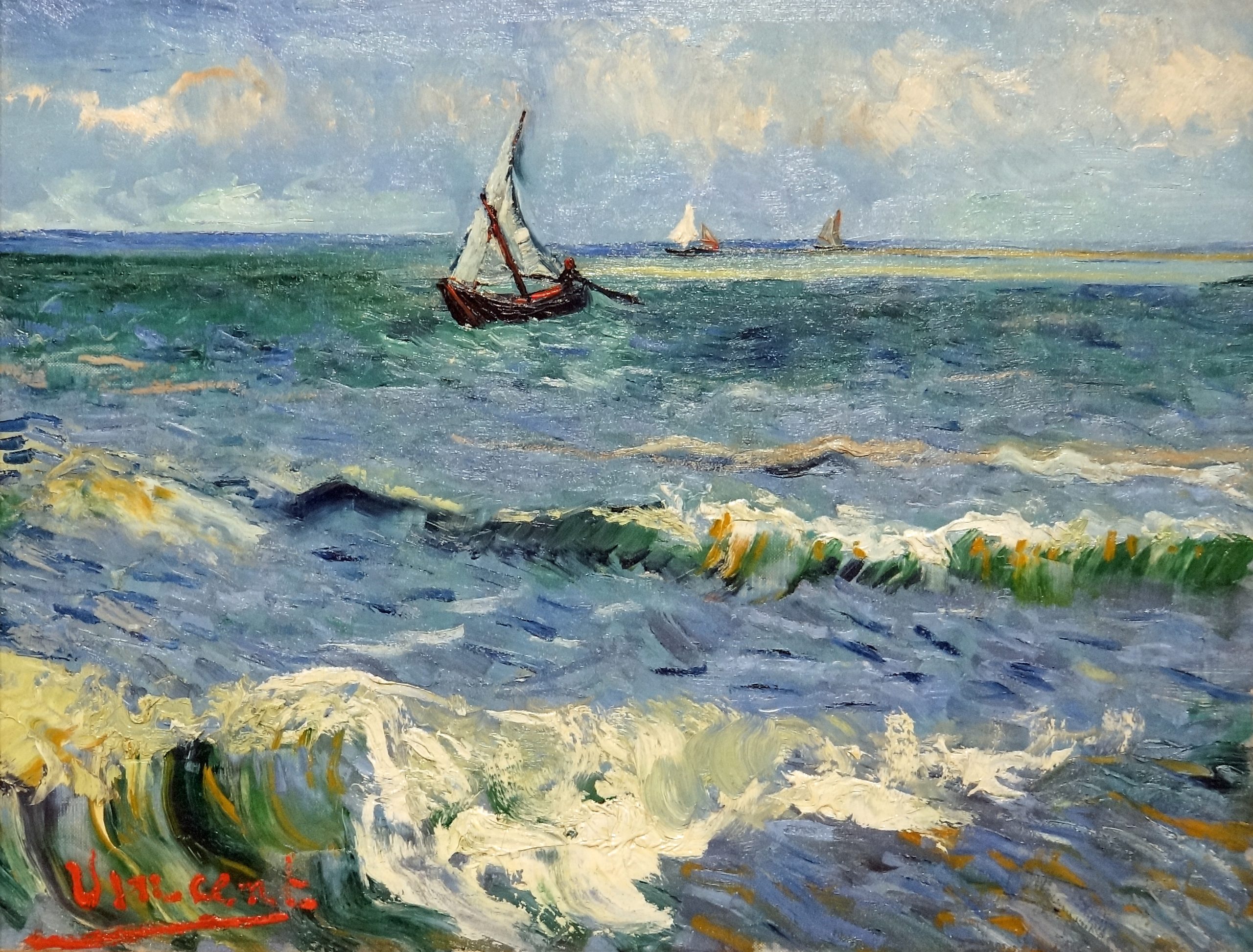
“On the Sea” by John Keats
It keeps eternal whisperings around
Desolate shores, and with its mighty swell
Gluts twice ten thousand Caverns, till the spell
Of Hecate leaves them their old shadowy sound.
Often ’tis in such gentle temper found,
That scarcely will the very smallest shell
Be moved for days from where it sometime fell.
When last the winds of Heaven were unbound.
Oh, ye! who have your eyeballs vexed and tired,
Feast them upon the wideness of the Sea;
Oh ye! whose ears are dinned with uproar rude,
Or fed too much with cloying melody—
Sit ye near some old Cavern’s Mouth and brood,
Until ye start, as if the sea nymphs quired!
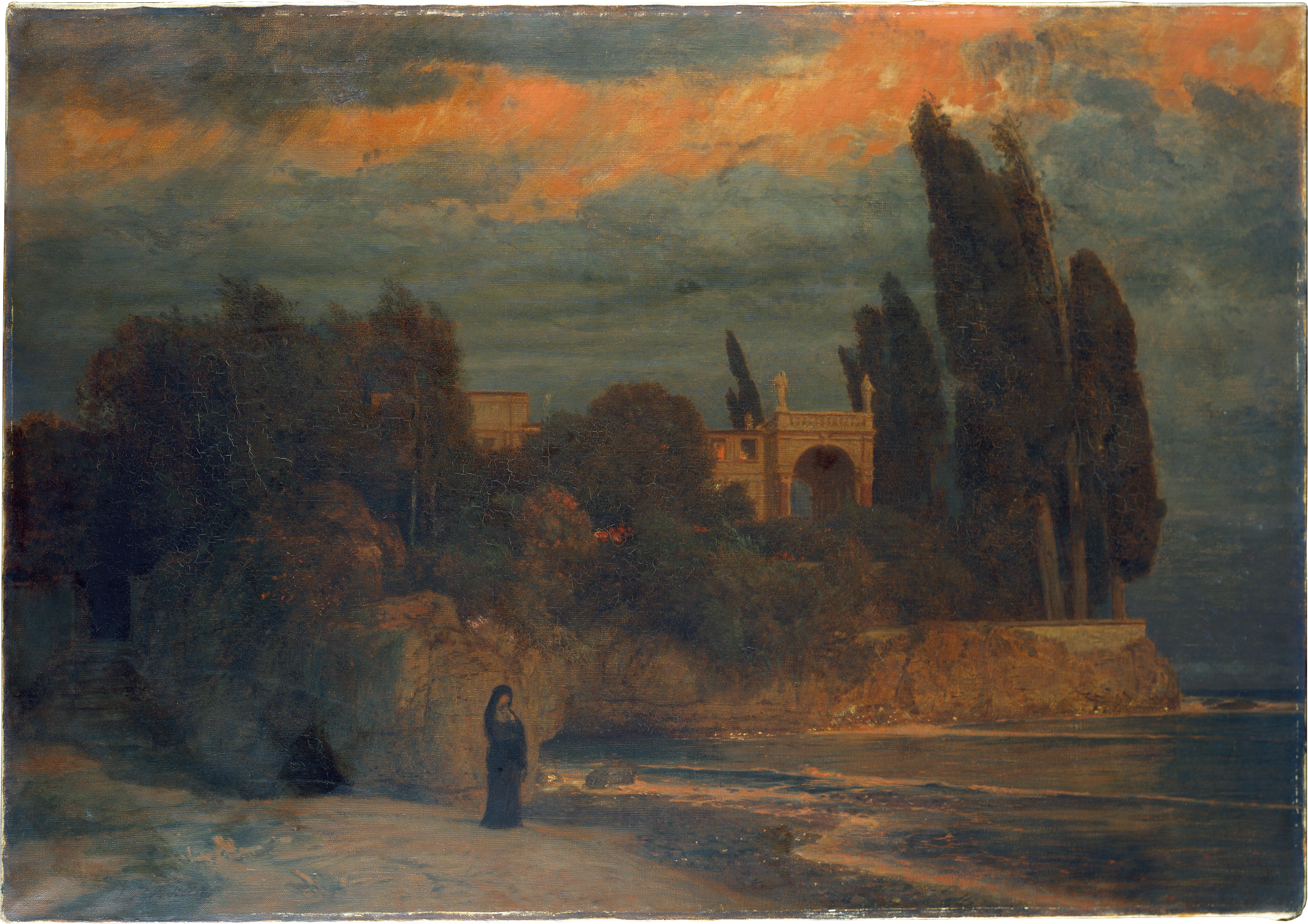
“The Lake Isle of Innisfree” by William Butler Yeats
I will arise and go now, and go to Innisfree,
And a small cabin build there, of clay and wattles made;
Nine bean-rows will I have there, a hive for the honey-bee,
And live alone in the bee-loud glade.
And I shall have some peace there, for peace comes dropping slow,
Dropping from the veils of the morning to where the cricket sings;
There midnight’s all a glimmer, and noon a purple glow,
And evening full of the linnet’s wings.
I will arise and go now, for always night and day
I hear lake water lapping with low sounds by the shore;
While I stand on the roadway, or on the pavements grey,
I hear it in the deep heart’s core.
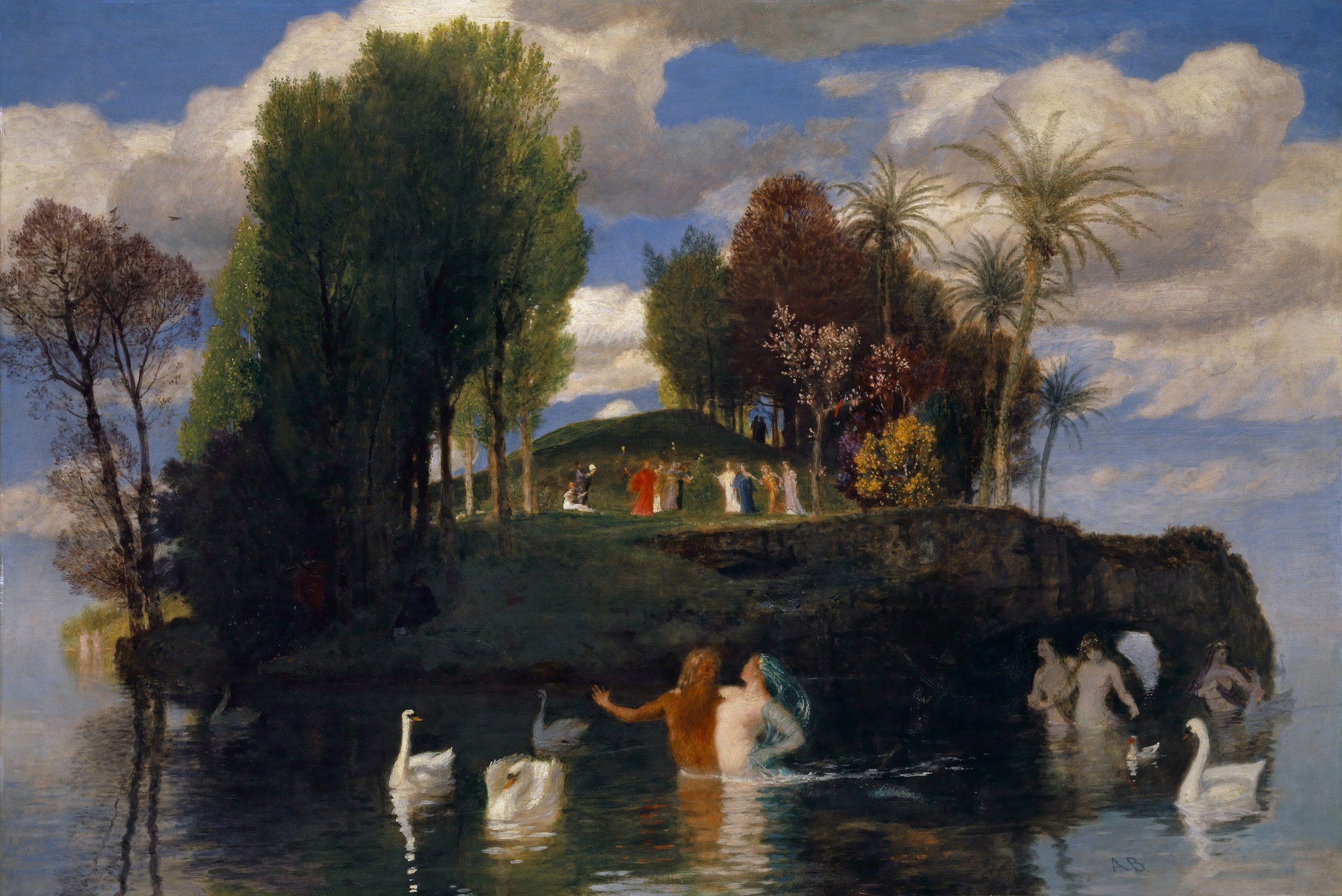
Excerpt from “The Tempest” by William Shakespeare (Caliban’s lament to Prospero)
This island’s mine, by Sycorax my mother,
Which thou takest from me. When thou camest first,
Thou strokedst me, and madest much of me; wouldst give me
Water with berries in’t; and teach me how
To name the bigger light, and how the less,
That burn by day and night: and then I loved thee,
And show’d thee all the qualities o’ th’ isle,
The fresh springs, brine-pits, barren place and fertile:
Curs’d be I that did so! All the charms
Of Sycorax, toads, beetles, bats, light on you!
For I am all the subjects that you have,
Which first was mine own king: and here you sty me
In this hard rock, whiles you do keep from me
The rest o’ th’ island.
(“The Tempest,” Act I, scene ii, lines 330-344)
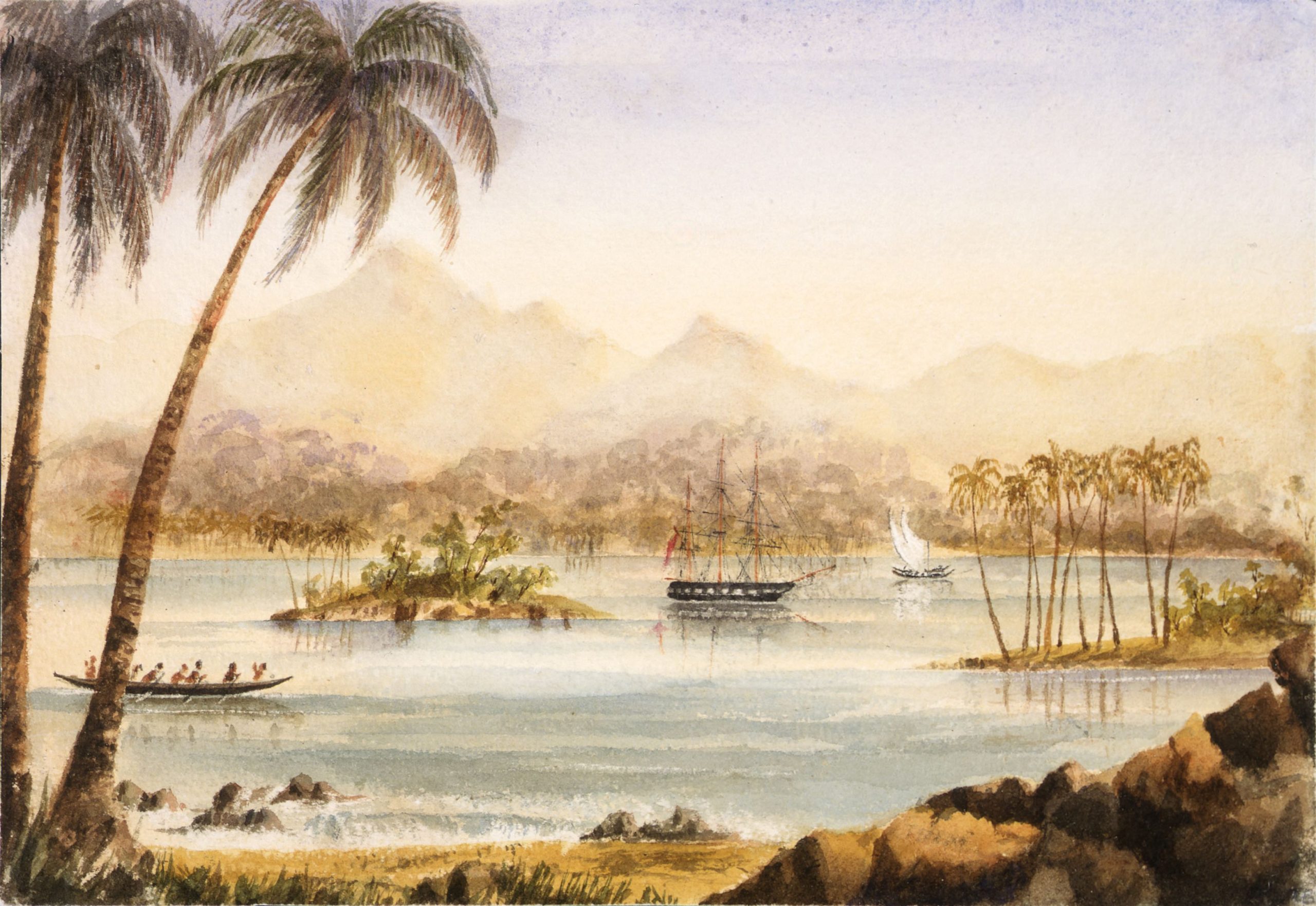
Excerpt from “The Birth of an Island” by Rachel Carson (The Sea Around Us, Oxford University Press, 1989)
“But [man] unhappily, has written one of his blackest records as a destroyer of oceanic islands. He has seldom set foot on an island. He has seldom set foot on an island that he has not brought disastrous changes. He has destroyed environments by cutting, clearing, and burning…upon species after species of island life, the black night of extinction has fallen.
In all the world of living things, it is doubtful whether there is a more delicately balanced relationship than that of island life to its environment. The environment is a remarkable uniform one. IN the midst of a great ocean, ruled by currents and winds that rarely shift their course, climate changes little. There are a few natural enemies, perhaps none at all. The harsh struggle for existence that is the normal lot of continental life is softened on the islands. When this gentle pattern of life is abruptly changed, the island creatures have little ability to make the adjustments necessary for survival” (pp. 93-94).
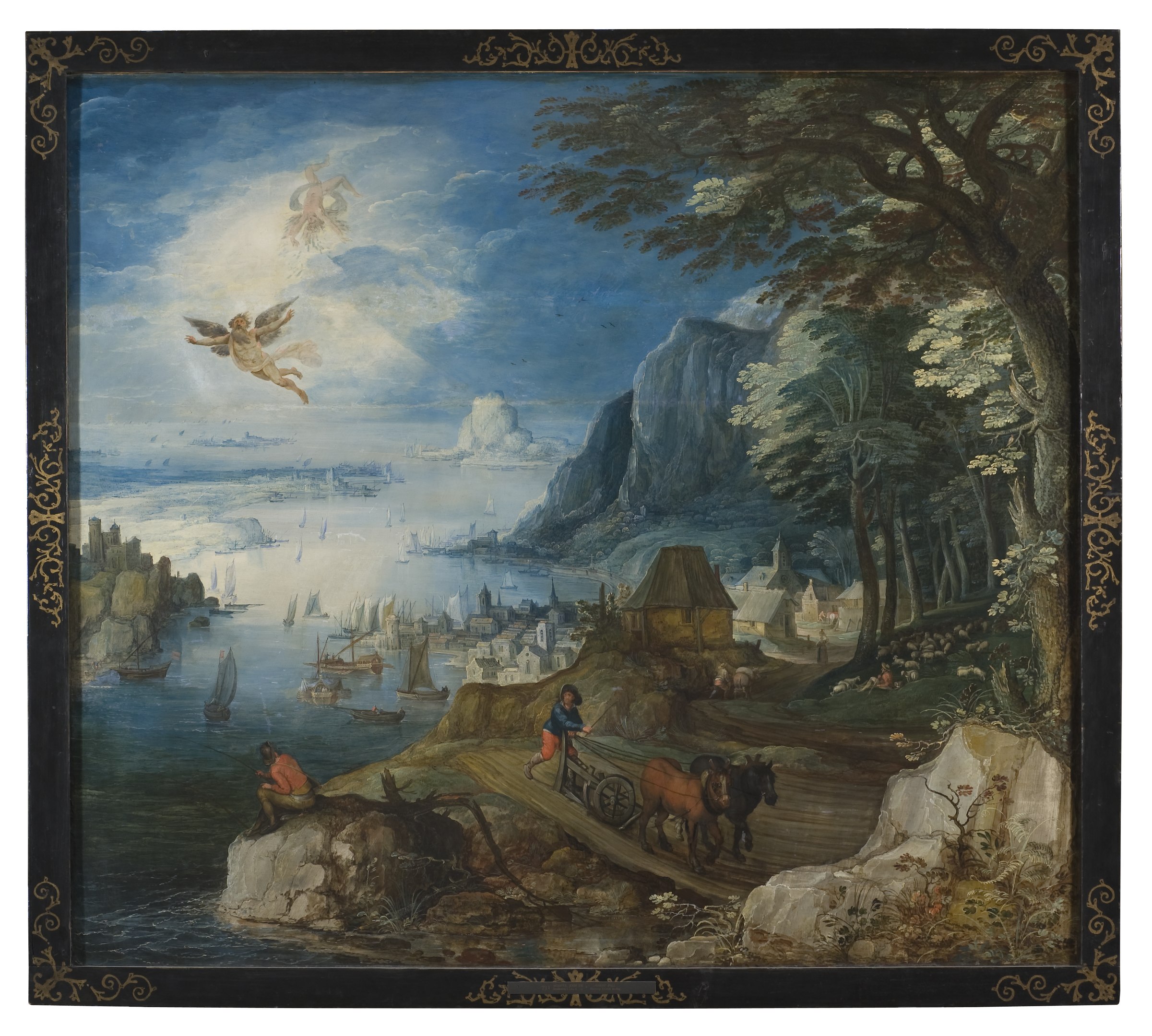
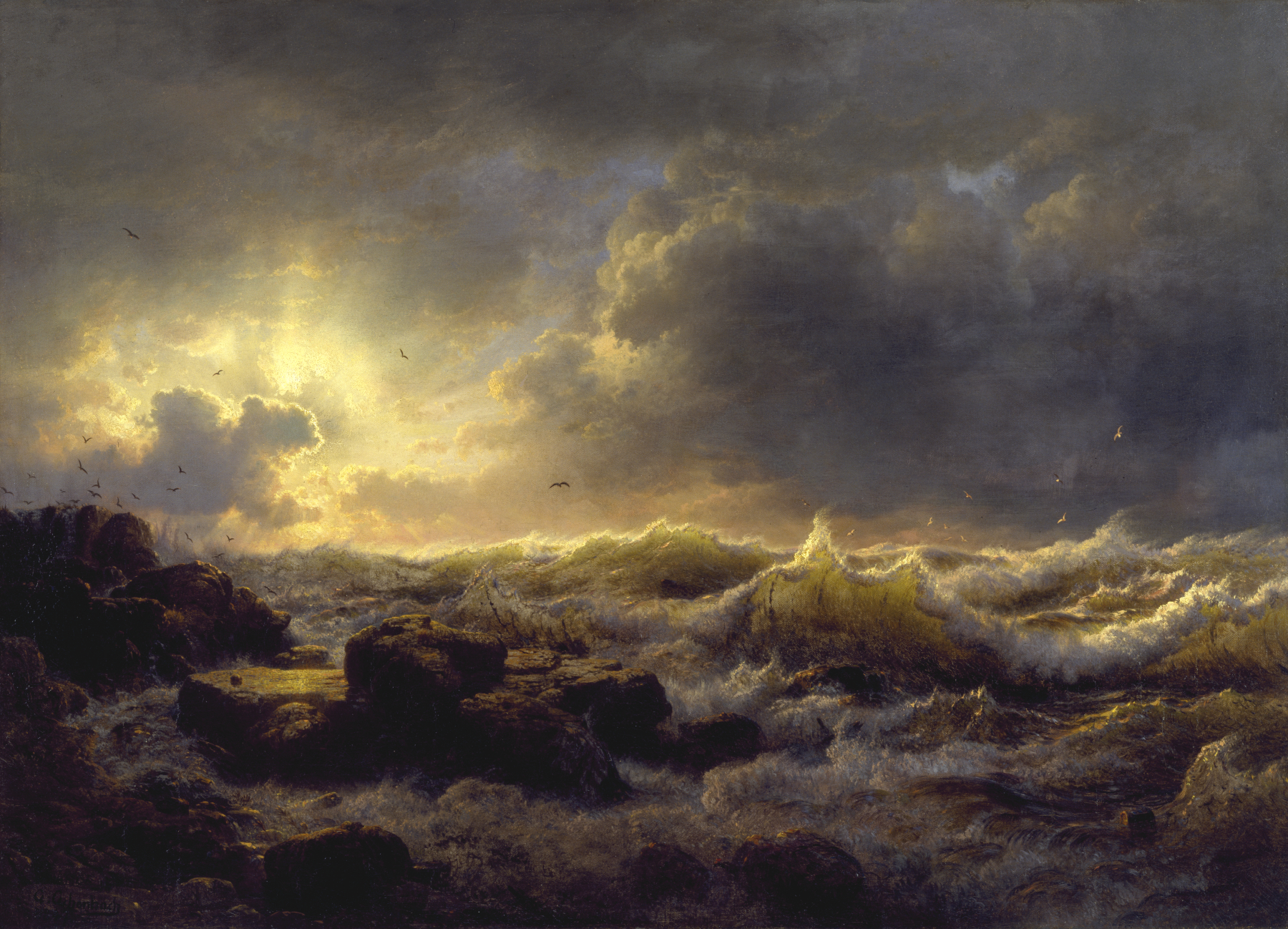
Courtesy: By Andreas Achenbach – Walters Art Museum: Home page Info about artwork, Public Domain, https://commons.wikimedia.org/w/index.php?curid=18782642
Excerpt from The Mirror of the Sea: Memories and Impressions by Joseph Conrad (Kent Edition, 1925)
“Beginning in the 1820s, the academy in Düsseldorf, a town on the Rhine River, began to attract artists from other German cities and from abroad. Achenbach, one of Düsseldorf’s most influential painters in the mid-19th century, specialized in the ‘sublime’ mode of landscape painting, in which man is dwarfed by nature’s might and fury. The tattered American flag on the rocks in the foreground implies that there is a shipwreck just out of view.
The greyness of the whole immense surface, the wind furrows upon the faces of the waves, the great masses of foam, tossed about and waving, like matted locks, give the sea in a gale an appearance of hoary age, lustreless, dull, without gleams, as though it had been created before light itself” (p. 71).
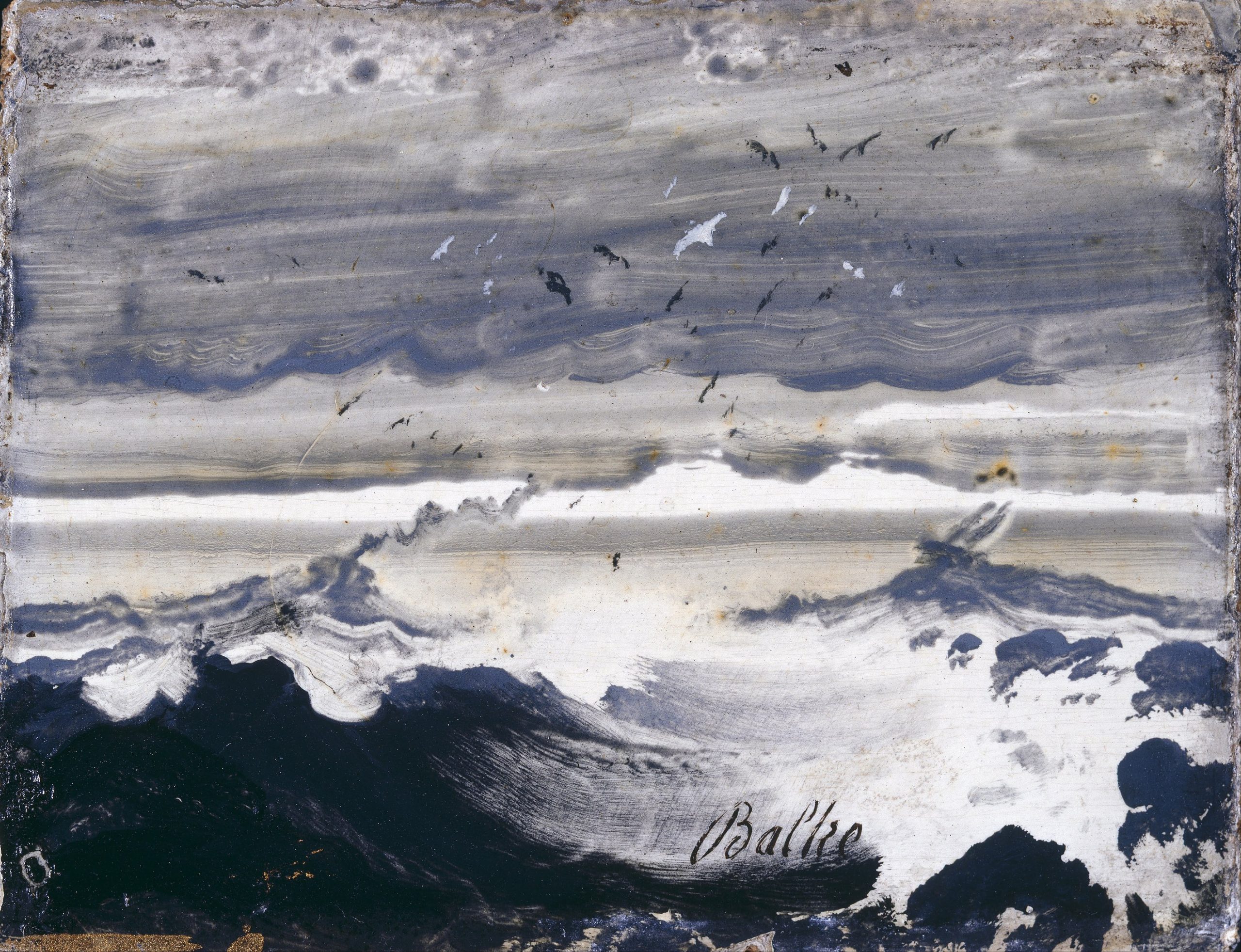
“Shipwreck” by Emily Dickinson
It tossed and tossed,—
A little brig I knew—
O’ertook by blast,
It spun and spun
And groped delirious, for morn.
It slipped and slipped,
As one that drunken stepped;
Its white foot tripped,
Then dropped from sight.
Ah, brig, good-night
To crew and you;
The ocean’s heart too smooth, too blue,
To break for you.
“Break, Break, Break” by Alfred Lord Tennyson
Break, break, break,
On thy cold gray stones, O Sea!
And I would that my tongue could utter
The thoughts that arise in me.
O, well for the fisherman’s boy,
That he shouts with his sister at play!
O, well for the sailor lad,
That he sings in his boat on the bay!
And the stately ships go on
To their haven under the hill;
But O for the touch of a vanish’d hand,
And the sound of a voice that is still!
Break, break, break
At the foot of thy crags, O Sea!
But the tender grace of a day that is dead
Will never come back to me.
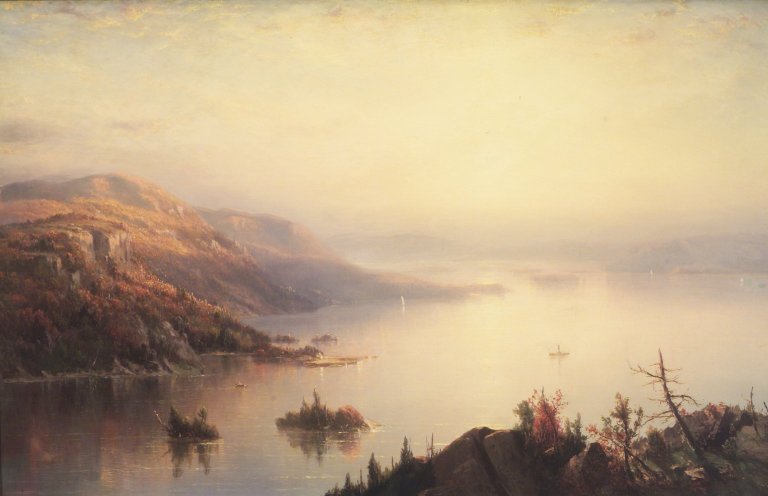
“The Negro Speaks Of Rivers” by Langston Hughes
I’ve known rivers:
I’ve known rivers ancient as the world and older than the
flow of human blood in human veins.
My soul has grown deep like the rivers.
I bathed in the Euphrates when dawns were young.
I built my hut near the Congo and it lulled me to sleep.
I looked upon the Nile and raised the pyramids above it.
I heard the singing of the Mississippi when Abe Lincoln
went down to New Orleans, and I’ve seen its muddy
bosom turn all golden in the sunset.
I’ve known rivers:
Ancient, dusky rivers.
My soul has grown deep like the rivers.
You can find more information about Langston Hughes here.
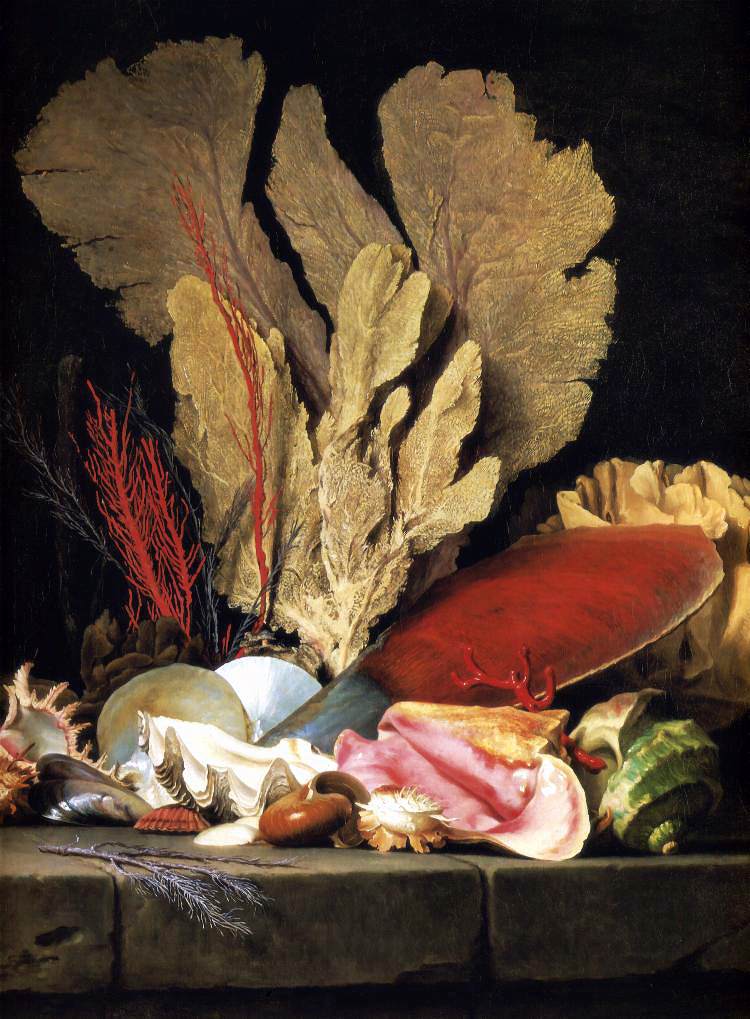

Further Resources

